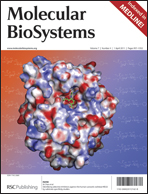Rare antibodies from combinatorial libraries suggests an S.O.S. component of the human immunological repertoire
Abstract
Convergence of observations from different sources is the norm in science. However, when convergence occurs in man for antibodies it is remarkable because the repertoire of possible immunoglobulin products is very large and diverse. Thus, one would not expect to see the same antibody twice from divergent populations unless there is special significance as to why the immune response is constrained. Now, broadly neutralizing antibodies isolated from combinatorial libraries from three separate populations have been shown to all use the same (VH 1-69) germ line gene and interact with the influenza virus in very similar ways. Here we discuss the reasons for this convergence in terms of how the immunological repertoire responds to emergency situations where time is short as occurs, for example, in potentially lethal infections. It is suggested that there is a first responder or S.O.S. component of the antibody repertoire that evolved to initiate rapid defense against infectious agents. The discovery of the homologies between these commonly produced antibodies may have significance for the design of novel vaccines. Finally, these convergent results may give much insight into why antibodies encoded by the VH 1-69 germ line gene are highly over represented in B-cell lymphomas.


 Please wait while we load your content...
Please wait while we load your content...